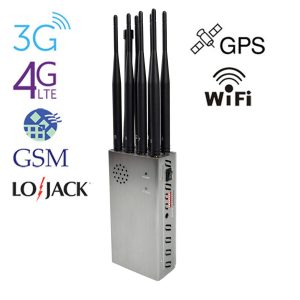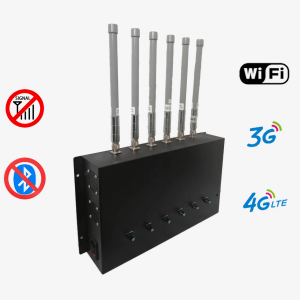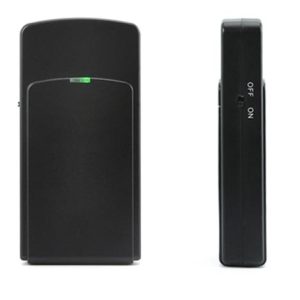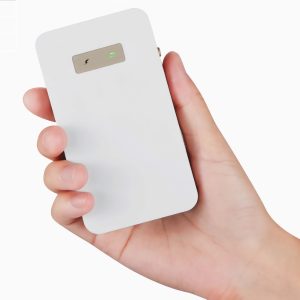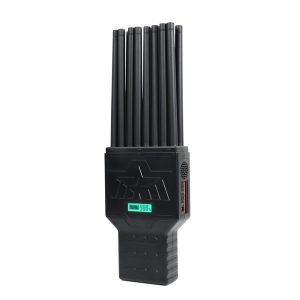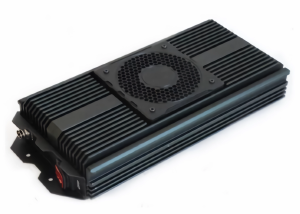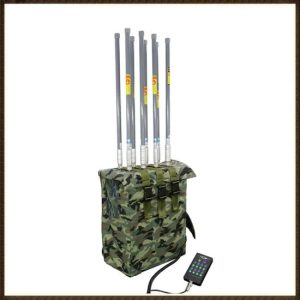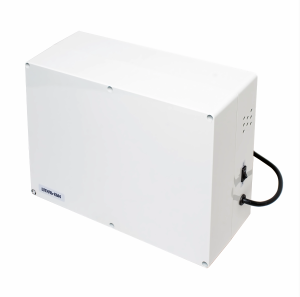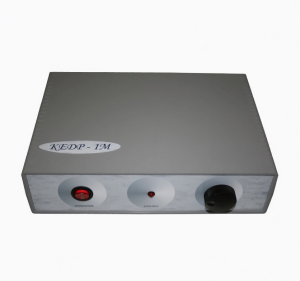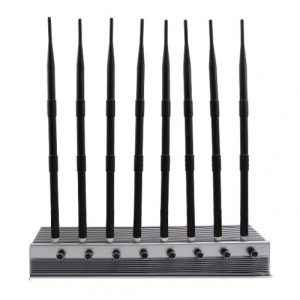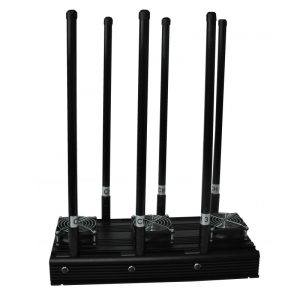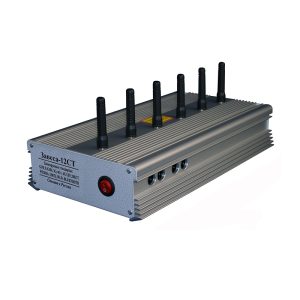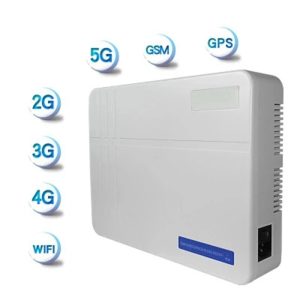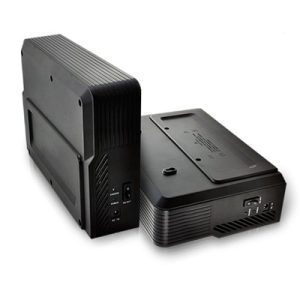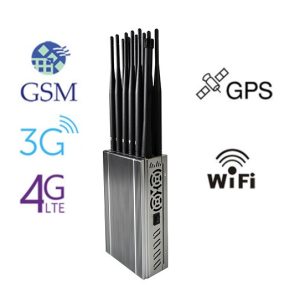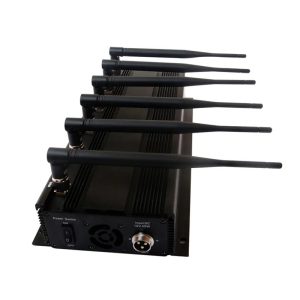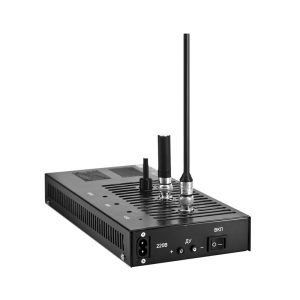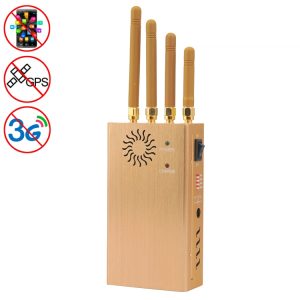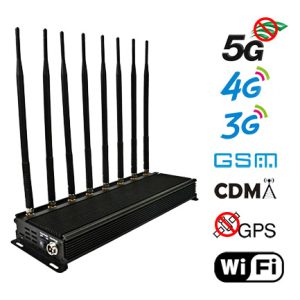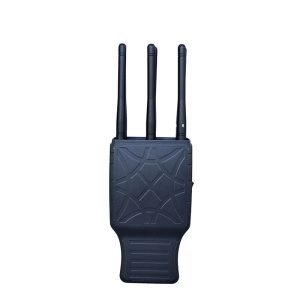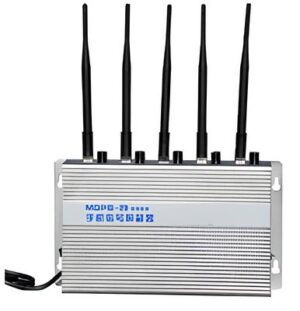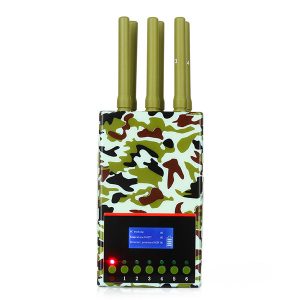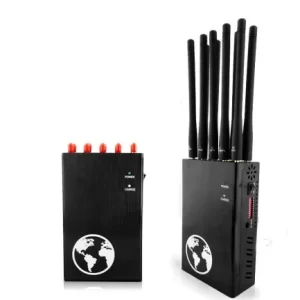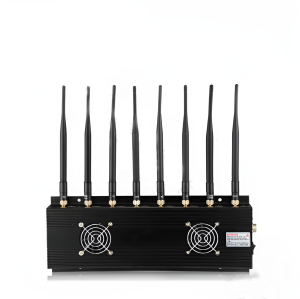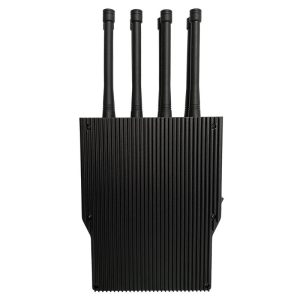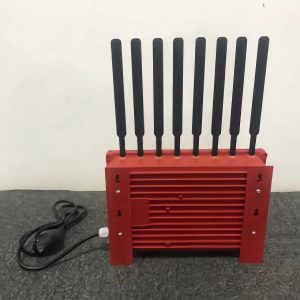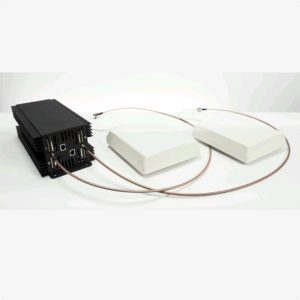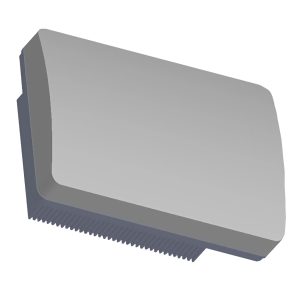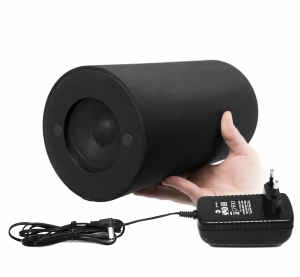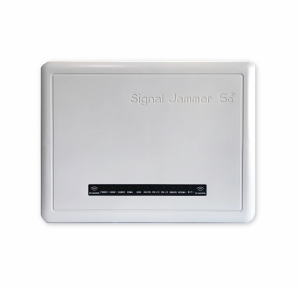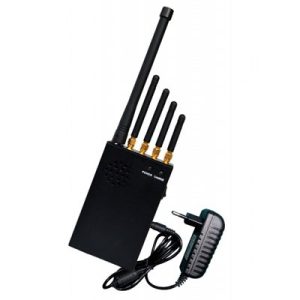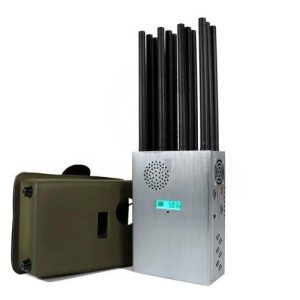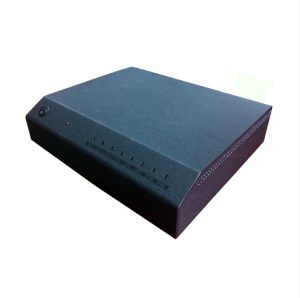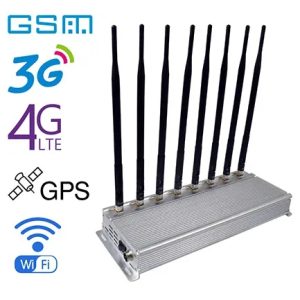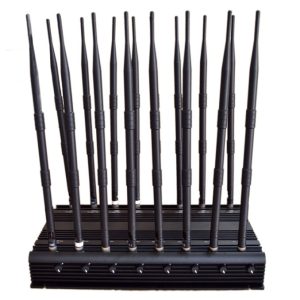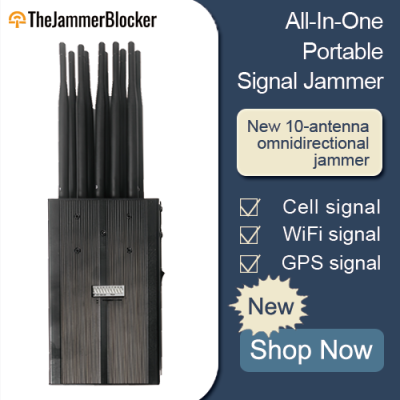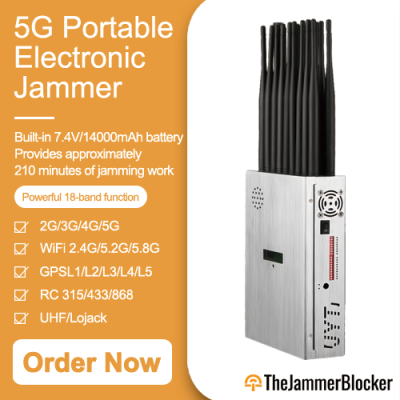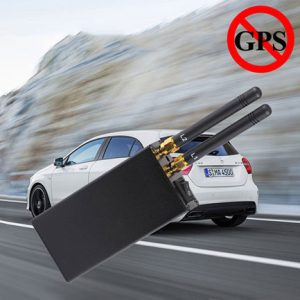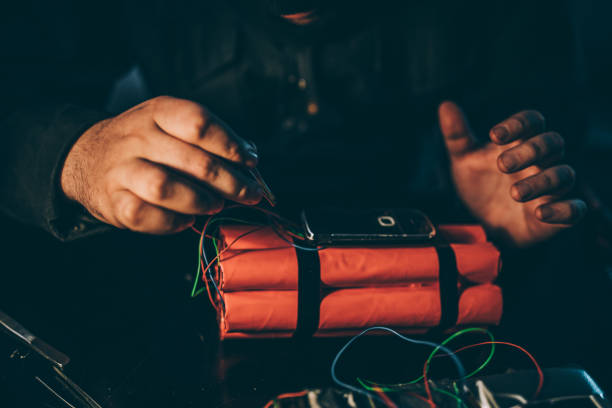Understanding Cell Phone signal Jammers
Cell phone Jammers operate by emitting signals on the same frequencies as mobile phones, effectively overpowering and nullifying them. Since mobile phones are full-duplex devices that use two separate frequencies for sending and receiving data, Jammers can disrupt one or both frequencies, causing the phone to believe it has no signal. Basic jammers may block a single frequency band, while more sophisticated ones can obstruct multiple networks at once, such as CDMA, TDMA, GSM, PCS, DCS, as well as 3G, 4G, and 5G networks.
Showing 41–80 of 124 results
- 418.99$
Say hello to the versatile and powerful P-US-08-4 GSM Jammers – your all-in-one solution for disrupting GSM, 3G, 4G mobile signals, 2.4GHz WiFi Bluetooth, and Lojack signals with ease!
- Original price was: 689.69$.425.36$Current price is: 425.36$.
P-BIN08 is a versatile wall-mounted GSM 3G 4G jammer designed for large-scale use. This device offers easy installation at home or in the office, meeting a variety of needs. It is a valuable tool for teachers looking to maintain the confidentiality of exams and facilitate focused learning for students.
- 536.27$
Want to bring some order to the chaotic signals around you? Choose this phone and bluetooth jammer, which drowns out various wireless communication signals and prevents devices from connecting by generating “white noise” (electromagnetic interference) in the interference frequency range.
- Original price was: 2,889.36$.2,236.58$Current price is: 2,236.58$.
This High Power Signal Isolator, equipped with six high-gain antennas, uses advanced UHF broadband interference technology to shield multiple signals, with an output power of up to 30W in a single frequency band. Each channel is equipped with an independent switch, which can shield specific signals in a targeted manner, making it very suitable for environments that require refined signal control.
- 121.99$
The CDMA GSM cell phone blocker is only 9.5*4.5*1.8CM and weighs only 0.068KG, which is the size of a mobile phone or lighter. Therefore, you can hide it better in your bag or pocket. Our devices come pre-configured from the factory, which is why we offer three different frequency options. You can choose the appropriate configuration according to your needs.
- 439.89$
This Mini cell phone jammer, which looks like an ordinary mobile phone and a mobile power bank, has become a “must-have artifact” for important occasions. Whether you hold it in your hand, put it in your pocket, put it in your bag, or quietly place it in the corner of the dining table, it can play a role in a hidden and practical way.
- 721.16$
From 5G down to 2G cellular signals, it ensures comprehensive coverage, providing users with enhanced control over their communication environment. This P-US-016-4 mobile network blocking equipment doesn’t just stop at cellular signals. It goes beyond to disrupt connections to various device frequencies, including WiFi, GPS, and more.
- 2,360.25$
The T-US-K05 4g Phone Jammer blocks unauthorized calls and disrupts eavesdropping devices on various frequencies, ensuring privacy and confidentiality during meetings by creating a secure communication barrier. Ideal for protecting sensitive discussions.
- Original price was: 13,555.99$.9,999.85$Current price is: 9,999.85$.
The USWR08 Military Manpack RCIED Jammer is a versatile backpack jamming system designed to protect VIP’s and groups of individuals from Radio Controlled Improvised Explosive Devices (RCIED) by disrupting the radio signals used to detonate the explosives in high-risk areas.
- 594.33$
Don’t want to be disturbed? Let 4G phone and bluetooth signal blocker help you solve the problem. The device can suppress the main communication frequency bands (from traditional GSM and CDMA to 4G and even Wi-Fi). Instead of blindly conducting broad-spectrum interference, it selectively isolates information in a designated space. The non-logo design allows it to be hidden in places you don’t want to be noticed.
- 758.45$
As a high-quality “noise reduction artifact”, T-KEDP phone signal jamming device can interfere with the signals of various communication devices (such as mobile phones, IP CCTV cameras, monitoring equipment, etc.) within a radius of 15 to 20 meters. It adopts an integrated structure with built-in antenna, and no additional external antenna layout is required.
- 839.93$
If the conventional T-US-08 Tabletop jammer cannot meet your needs, you may wish to consider this more powerful 70W customized fixed signal jamming device T-US-08-2, giving you a more efficient communication jamming solution.
- 2,119.26$ – 2,169.26$
Use the 135W fixed 4G iPhone mobile phone scrambler to quickly block signal interference in standard GSM, GPS and other frequency bands (covering the 700MHz to 2700MHz frequency range), covering a signal restricted area with a radius of up to 150 meters. Support 24 hours of continuous operation.
- 556.23$
The phone jammer W-US-08 can block cellular, WiFi and UHF/VHF signals at the same time. Independent knob switches and status indicators are set on the control panel. Need to block 4G data but still allow basic 2G calls? W-US-08 can meet your needs.
- Original price was: 629.09$.489.39$Current price is: 489.39$.
This fixed signal suppressor can accurately cut off signal leakage channels and can run uninterruptedly after only a few minutes of warm-up. It is equipped with dual-mode 220V AC (fixed installation) and 12V DC (mobile use), adapting to a variety of scenarios.
- Original price was: 899.69$.575.36$Current price is: 575.36$.
The High Power School WiFi Phone Blocker Jammer is an advanced tool for disrupting mobile phone and Wi-Fi signals, featuring a sleek, modern design. Its discreet appearance allows it to blend effortlessly into any setting, effectively performing its function without drawing attention as a signal jammer.
- Original price was: 599.99$.399.69$Current price is: 399.69$.
A stationary powerful GSM 3G jammer with an internal battery, which makes it portable at the same time.
- 646.96$
The Mobile Jammer P-US-012-1 isn’t just another signal blocker —it’s your portable privacy shield. Covering 12 frequency bands (2G, 3G, 4G LTE, GPS, WiFi, Bluetooth), it protects you from tracking, unwanted calls, and wireless surveillance.
- 489.36$ – 539.36$
As people gradually pay more attention to privacy, our technicians have specially developed this best jammers block cell phone signals according to different needs, which means that it can block different types of radio frequency signals at the same time—— Including 2G-4G mobile phone signal & 2.4GHZ wireless network (including Bluetooth).
- 1,299.17$
Desktop mobile phone scramblerspecializes in blocking CDMA 800/PCS networks, intelligently suppresses communication links through adaptive noise signals, and is compatible with 50Ω external antennas to increase the suppression range. It supports smooth power adjustment and interference area customization.
- 289.16$
The emergence of innovative solutions such as the 4 antennas electronic device frequency blockers not only do these devices stand out with their gold design, but they also provide a reliable way to prevent the transmission of specific frequency signals such as 2G, 3G, and GPS.
- 539.98$
The 8 bands mobile phone jamming device can effectively jam 2G 3G 4G cell phone signals, and can also block GPS, WiFi and other frequencies. It has eight working antennas, so it can simultaneously stop eight different frequency bands at a distance of up to 40 meters. You can set the parameters manually – or turn it off if you don’t want to interfere with any signals.
- 1,688.08$
The key advantage of T-US-719 is its excellent reliability and durability. The shortest use time can reach 10,000 hours. In fact, the average life of this model is not less than 10 years. Therefore, the price of T-US-719 will be slightly higher than other equipment of domestic manufacturers.
- 416.31$
One of the standout features of this celluar signal jammer is its ability to selectively disable frequencies. Users can choose to allow one or more bands to remain active while shutting others down. This flexibility ensures that you can tailor the jamming functionalities to specific needs without disrupting other bands.
- 349.78$
This desktop 5-antenna 3G jammer blocker supports manual adjustment of interference intensity, 0-2W power can be smoothly controlled, and 0-50m range can be accurately blocked. It can handle conference room partition control, laboratory sensitive equipment protection, and small-scale suppression near windows.
- 408.99$
Looking for a blend of style and functionality in a mobile jammer? Look no further than the P-US-06-3 smart 4G signal blocker! Embracing a sleek military camouflage design, this jammer combines aesthetics with cutting-edge technology to keep you in control.
- 349.79$
The future technology 10-antenna adjustable 5G cellular network blocking device not only disrupts 5G signals but also serves as a GPS and Wi-Fi scramblers, offering extensive functionality in a sleek design.
- 596.88$
This fixed phone and WiFi jammer supports customized shielding of 8 frequency bands, covering mainstream signals such as 5G, WiFi, GPS, etc. It supports staggered cellular deployment of multiple devices and is suitable for large, medium and small spaces. It is an ideal information security management and control device.
- 999.99$ – 1,149.99$
Unleash the power of signal control with the Enhanced P-US-08-2 5G Phone blocker, a top-edge portable jammer device designed to dominate multiple frequencies simultaneously, ensuring comprehensive protection against unwanted communications!
- Original price was: 969.66$.669.66$Current price is: 669.66$.
The JM008 Explosion-Proof Wall-Mounted 4G Phone Jammer offers a professional-grade solution for blocking unauthorized mobile and WiFi signals while ensuring reliable safety performance in explosive or flammable areas.
- 1,877.25$
T-US-RS powerful signal suppression equipment adopts digital baseband signal synthesis (DDS) technology, which can not only suppress traditional GSM signals, but also provide strong interference protection for modern broadband communication networks (such as UMTS, LTE and 5G), and support remote programming and control via Ethernet connection to a PC.
- Original price was: 2,289.49$.1,753.86$Current price is: 1,753.86$.
This waterproof wall-mounted Ultra-high power jammer for cell phone signal has a built-in 8-band antenna and a powerful 150W high power output, effectively blocking mobile phone signals and WiFi signals. Equipped with a user-friendly ON/OFF switch. The built-in directional antenna allows users to freely switch different frequency bands according to their needs to achieve the best jamming effect.
- 1,998.25$
Who would have thought that such a device that looks like an ordinary speaker actually has powerful recording and communication signal interference functions! This recording and mobile phone blocker is equipped with 96 high-efficiency ultrasonic transducers to effectively suppress various recording devices. Its radio frequency interference mode can also effectively cut off data transmission channels.
- 849.78$
During secret negotiations, it is particularly important to monitor the surrounding radio frequencies in all directions. The cell phone signal suppressor is designed to meet such challenges. It covers all frequency bands from 2G to 5G (including NSA and SA) and WiFi. Whether it is voice calls or data transmission, it can be blocked within the range of 5-40 (the best effect is 200 meters away from the base station).
- 249.36$ – 305.79$
Portable 5 bands car-mounted GSM 3G cell portable jammer , 3W output power, a jamming range of up to 20m, and the ability to jam multiple frequencies. The built-in quiet cooling fan ensures that the device can be used in a low profile manner without attracting attention, which is especially important in sensitive environments that require careful handling.
- Original price was: 1,169.99$.729.99$Current price is: 729.99$.
T-US-08-5 is a compact indoor 5G jammer built for real-world privacy: it covers 8 common bands (from GSM to 5G and Wi-Fi), delivers up to 40 W total (≈5 W per channel) and creates an adjustable no-signal zone from 5 to 40 meters.
- 785.25$
This mobile cell scrambler is not only superior in strength, but also the preferred communication security tool for professionals and ordinary users. Buy once and protect your communication privacy for life. You’ll be captivated by its functionality and design.
- 987.33$
This compact 4G mobile cell and wifi bluetooth jammer is designed to meet the needs of multiple voice and data standards, supporting wired control, radio control and infrared control. It provides the option of local network management, and multiple devices can be monitored and operated in real time through the platform.
- 473.56$
The Silver Fixed Signal blocking device is equipped with eight antennas, which can effectively output interference capabilities up to 40 meters, effectively isolate target signals and ensure indoor communication security.
- 1,179.36$
In contrast to typical signal jammers, this stationary signal jamming equipment can target 16 kinds of signals, including less common yet widely used Radio frequencies…
Showing 41–80 of 124 results
Looking to maintain peace and privacy in areas where mobile communications need to be restricted? Look no further than cell phone jammers, people also known as mobile signal blockers, designed to interrupt the signal transmission and reception between telephone and cellular towers. TheJammerBlocker offers a wide variety of these smart phone jamming devices to cater to diverse needs.
Our selection of mobile cell jammers includes models tailored to disrupt various mobile phone networks, from GSM (PCS 1900, CDMA 850) to 5G networks.
Types of Cellular Jammers and Their Characteristics:
Cellular jammers are categorized into three main types:
- Fixed Jammers: These are large, powerful models with a wide operational radius, featuring at least 10 antennas. Ideal for professional events, they operate around the clock to ensure comprehensive signal blocking.
- Portable cell phone Jammers: These compact devices are designed for short-range use and powered by an internal battery. They are perfect for small events where confidentiality is crucial.
- Shielding Bags: These bags, such as Jbags, hide the location of a specific device on any map. They have two sections: one for blocking communications and another for preventing harmful radiation.
These devices are useful in any setting where silence is required and help prevent eavesdropping through GSM vulnerabilities.
Mobile phone jammers are divided into two categories:
- Area-Wide Suppression: These devices generate radio frequency interference, preventing mobile phones from connecting to base stations. The range can vary from 3 to 50 meters, depending on the jammer’s power and the proximity of the base station.
- Targeted Influence: These devices detect specific phones and signal the operator that a particular phone is in an inaccessible area.
To protect mobile phones, jammers operating on GSM or CDMA channels are typically used. Therefore, buying a cell phone jammer means protecting yourself from all types of information leaks and having confidence in long-term confidentiality.
Why you need buy Phone jammers from TheJammerBlocker?
At TheJammerBlocker online store, we prioritize quality and reliability in all our mobile network Blockers products. Each signal stopper undergoes rigorous testing before leaving the factory to ensure its effectiveness in blocking mobile phone signals and preventing communication disturbances. Our dedicated team is committed to providing exceptional customer service and guidance to assist you in selecting the ideal GSM jammer for your specific requirements.
Embrace control over telephone usage in your surroundings with our 5G cell phone Jammer solutions. Explore our range today and cultivate a more serene and secure environment in any setting.
Read More about Exam Room 5G Jammer TX-NZ50W
How to smart choose the right mobile phone blocker from our store?
When selecting the perfect cell phone signal blocker from our store, it’s crucial to avoid common pitfalls and make an informed choice that aligns with your requirements. Here are some key points to guide you in selecting the most suitable mobile blocker for your needs:
Understand the Target Device Frequency: It’s essential to know the frequency of the smartphone device you wish to block. Opt for a cellular jammer that covers the specific frequency range of the target device for optimal effectiveness.
Consider Target Device Power: The power of the target device influences the intensity and reach of its signals. Choose a cell phone scrambler with sufficient power to effectively suppress the transmission and reception of signals from the target device.
Evaluate Application Environment: Your usage environment plays a significant role in selecting the right signal disruptor. If you require mobility, go for a portable jammer. For stability and durability, opt for a desktop 5G jammer. In complex environments with obstacles or close proximity to base stations, prioritize high-power cell phone jamming device.
Mind the Interference Distance: Select a cell signal blocker with an interference distance suitable for your needs. For instance, shorter distances may suffice for conference rooms, while larger venues may require longer interference ranges.
By considering these factors diligently, you can confidently choose a cellphone jammer that caters to your specific requirements.
How to use a cell phone signal jammer?
Using a jammer is very simple. Simply screw the antenna into the device, turn it on, and wait about 10 seconds. During this time, it will block all signals within its range that need to be blocked.
Important tips:
1. Never turn on the blocker until it is fully assembled.
2. When fixing, the markings on the antenna and the housing must match (improper fixing will cause the blockers to degrade or malfunction);
3. After connecting the antenna, check that the power switch is in the “ON” position, the generator is turned on, and the power indicator lights on each band are green;
4. a: { For handheld cell jammers } Each band can be turned on and off using the dip switch located above the indicator light; (the specific bands controlled by the dip switch are detailed on the side of the box )
b: { For adjustable desktop mobile phone jamming devices } Each band can be turned on and off using the button located below the antenna; of course, this button can control the power level, and thus the distance at which the jammer blocks the signal.
5. Place the scramblers in a well-ventilated area.
6. The antenna should always be placed vertically.
7. Avoid large objects to avoid shielding;
8. If used outdoors, make sure the device is dry.
9. Do not touch the antenna when the device is active.
10. When used in a car, make sure the car adapter provides 12V output, because the scrambler runs on 12V DC (Some blockers run on 24 DC, see the product specific introduction for details).

